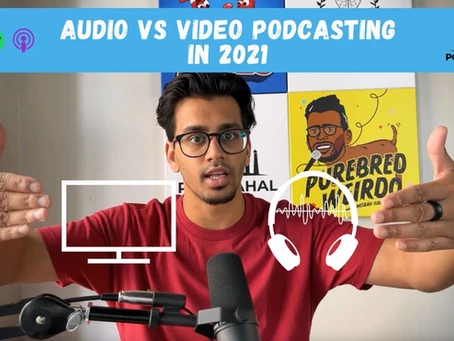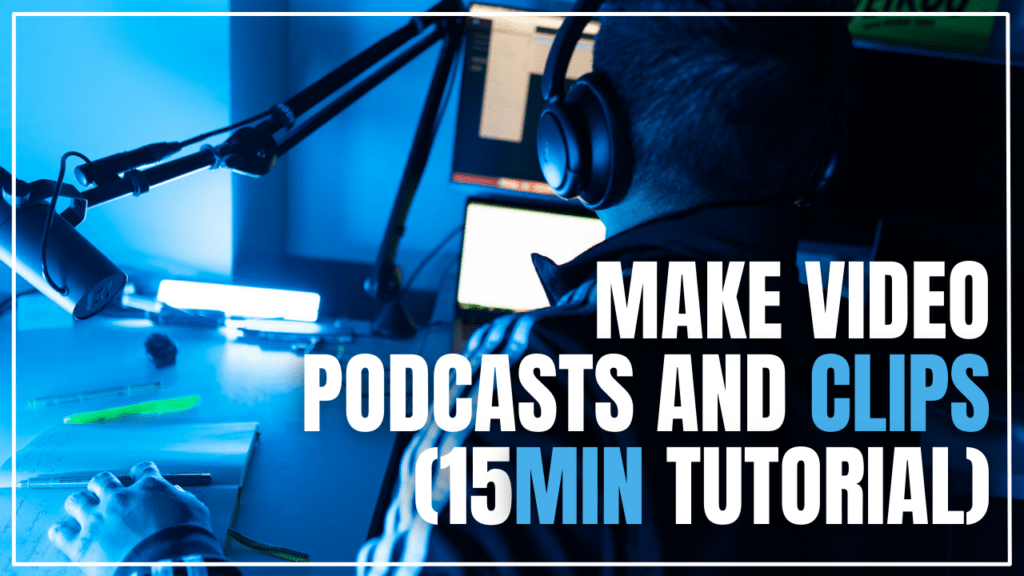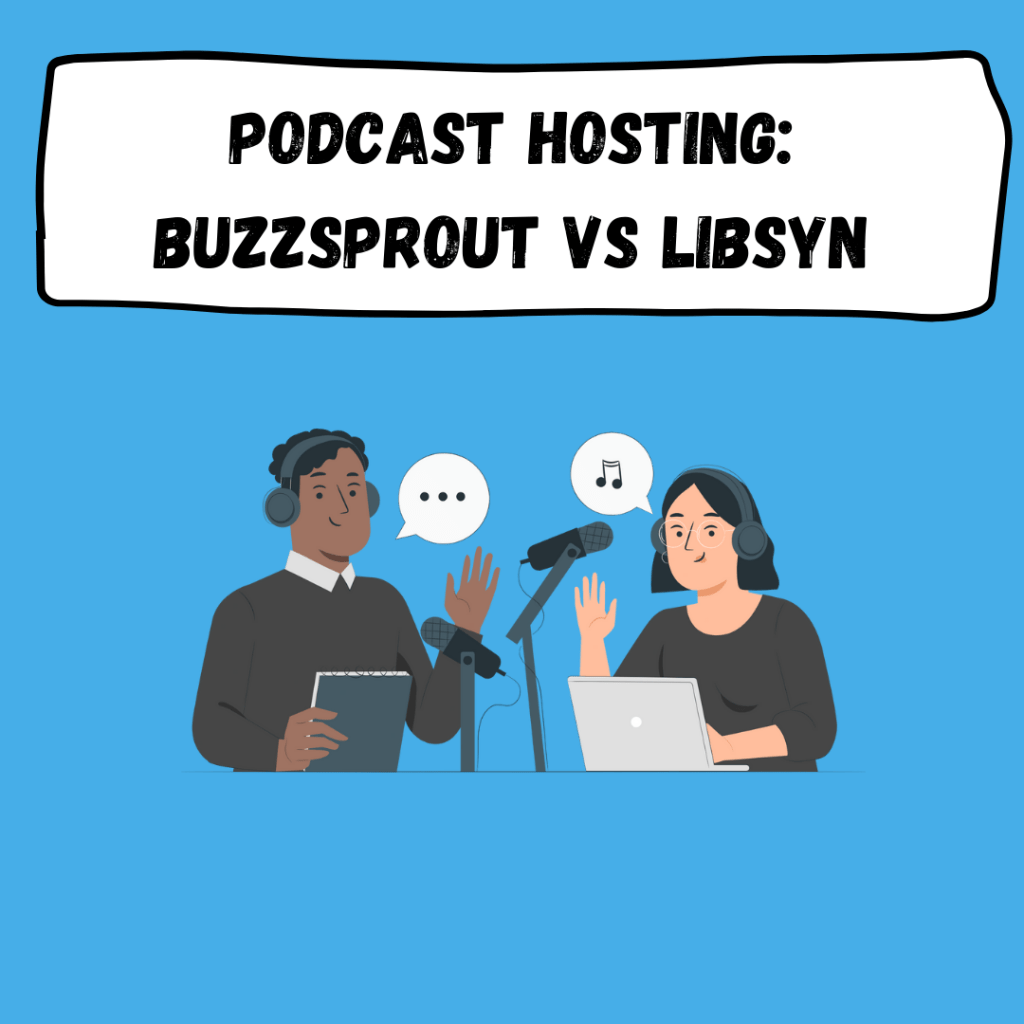In the previous podcast episode, “The Art of Breathing” with Brian MacKenzie, we discussed podcasting as closely similar to public speaking. He said, “You’re not in front of a massive crowd, you’re in front of one person.” That’s one good thing about podcasting. Most podcasts are audio-only while using video podcasts comprise a lot of benefits you may utilize. However, there are people who despise being on camera for some reason.
Below are the different ways to publish content regularly without being on camera:
- Do a solo podcast.
- Use transcriptions.
- Create carousel or infographic-style posts/stories out of your audio episode.
Podcast Transcript:
Misbah Haque (00:09):
Hey everybody, what’s going on? My name is Misbah Haque. And welcome back to another episode of pod Mahal. Today, I am really excited to dive into something that definitely affects me personally. And I know with some clients this is a strategy they wish they could see laid out or see that, hey, this could work for me. But basically, it’s, uh, I want to talk about ways to publish content regularly. If you don’t like being on camera whether you’re just camera shy, or you don’t like, you know, you want to be able to create regularly in your robe or something like that.
I’m not here to judge you. I know what that’s like, especially if you’re somebody who’s a little bit more introverted. Video is still great because it’s like, you control it, you can show up kind of on your terms, you’re not there’s no live audience there. But you are getting the stimulus of performing a little bit too. Not a live audience but an audience because you know, other people will listen to it or view it.
So you are performing in a bit of a heightened state. I remember talking about that with this guy who specializes in studying that stuff, Brian Mackenzie. And that was fascinating to me, homie-like podcast specifically, I remember I told him, I did like four or five guest ones in a week and how I felt just floored from doing that quantity. And he said it’s very similar to public speaking, you don’t have that live component of the audience there.
But the heightened state, and the seriousness that you might be taking it with, does take up energy, right. So you know, I understand that’s different for everybody. Being on camera has huge advantages if you can get yourself to do so. But I know that you know that. And even though we know that, it’s still helpful to be like what, it’s fun to be able to turn on the mic talk and get something out there or do it in another way where you don’t have to share your face at all. And so I get that. So let’s dive in.
The first strategy for being able to do that is using a solo podcast to record and capture your thoughts in a format that basically gives you the most creative control. It’s this right here, what you’re listening to, I’m doing a solo podcast, I’m talking about something that I’m teaching you something and I’m talking like, I’m actually talking to you, or I’m imagining talking to a specific person, that this would be helpful to. And this is something that I’ve created. And I have a lot of creative control over where it’s like once I record it if I don’t want to publish it, I don’t have to publish it I can edit a part out I normally don’t. But if I want to, I can cut something completely out of here, for example.
So there’s a lot of control there where it’s not, you can expose yourself to the elements in that heightened state of like recording in the thrill and you know, capturing the energy. Audio is brilliant for doing that. So even though you are not on video, you can get the same benefits that video is able to bring which is basically making you feel like you are in the room, you can see people’s body language and all that with audio, you can feel it. You know what I mean? If somebody gets nervous you can listen to that in their voice a little bit more.
It has a fascinating effect in terms of being able to bring you behind the scenes and make you feel closer. And as the speaker, you feel a little bit more free, just because you’re not being observed in this other way that you’re not used to. Right. So anyway, that’s one another way that you can use to create content regularly is transcribing your episodes into a blog post that you can put on your website, which is basically really helpful for search engines like Google. So just by you showing up and using the first strategy and creating a solo episode.
The next strategy is you use that exact transcription to either create a blog post from that or some people. I have a client who likes to do it in reverse order. He’s a big fan of writing things out and doing In a blog post fashion bullet point fashion first, and then from there going ahead and recording it. So either version works, think about whatever feels more natural to you, a lot of people for that, like I can’t write, that’s not my thing. Well, that’s okay, you can talk. So then maybe talking is where you start.
But if you enjoy writing, then you know who you are, then maybe starting in a blog post format is helpful. But that alone is still valuable today, even though that might not be your only format, it’s helpful to build a catalog on your website, because that is indexed by Google. And, yeah, it’s just going to be a helpful way for you to capture people who are kind of searching for your stuff, right? So those are two ways that you can create content regularly without being on camera.
The third way is you can copy and paste major moments from your episode to create the you know, like a carousel, a Post story, or an infographic style post for social media. So now we’re talking like, okay, we’re not videos, a huge part of Instagram, and Facebook and Tik Tok and all this stuff. But how do you still stay involved? And how do you still provide value on these platforms and still kind of play the game without having to be on camera? Right? And if you watch any of the accounts that you follow, I mean, I know there’s some that are purely like carousel styled posts, or just infographic styled posts that I’ve never seen their face, to be honest. Yeah, they just, they don’t show their face. And it’s just kind of their style, right?
So that is a major advantage of like you can be on the same short-form platforms where people are learning and absorbing stuff like reels and doing tic TOCs aren’t the only way of creating content, even though it’s hot right now. If you can get good at creating the swipeable carousel-style posts, or stories, I mean, both of those things are kind of timeless, and it has a lot of perceived value I found from testing this myself is even though it’s like simple stuff that maybe you said in a video, you could say in a video, it might get discounted, just because you’re talking about in a video, nobody ever hears it or gets that far in the video, but they will swipe and they can easily that that text before they know it, they’re consuming that text or reading down the scroll.
So I’ve also found that this, I’ll do another episode on how else you can kind of use that. But just really quickly, I’ve used that in an email, I send out emails with just those infographics. You know, if there are five or six of them, one on top of another in an email, it looks really cool. It’s a nice, fun way to deliver information. So those are three different strategies that you can use to create content pretty regularly.
You can be in the stories and all that stuff without having to show your face. Another thing that I want to add in there is to even though you may not like being on camera, you may have some headshots of yourself, or you’re open to doing a photo shoot where like, you can get some good pictures of yourself, you know, likes to have on hand for other stuff, or you can do it yourself as well. But let’s say you’re open to getting, doing a little bit of a photoshoot, and getting some pictures.
Once you have that it’s super valuable in designing stories and carousel style posts where you can actually put yourself if you have five to 10 different photos, right? You can that’s five to 10 different posts or slides or stories that you can kind of rotate through. So now you’re still showing your face and there’s this personable side of it that you’re getting to take advantage of but you’re not having to take fresh photos and get camera ready every time you’ve already got these pictures batched and ready to rock. So that’s something to consider. But again, that’s not something you have to do. I think even without that if the content that you are providing in the voice that you’re able to bring, like how you talk and how you connect and all that stuff is there then
Using solo podcasts to capture your thoughts is huge. Or podcasts of any format. Really, if you’re doing it with a guest, you can do it without being on camera. But a solo podcast is a really fun fulfilling creative way to make stuff and be fully in your control, you don’t have to rely on other guests or when their schedules line up. So that’s why I chose that as one content strategy here. And then number two blog posts, and not be you know, not just blogs, but like your website. So keeping things at a central location on your website has value, optimizing it, you know, for search, you do this either way. So with recording your episode first and then transcribing it, or drafting your episode as a blog post first and then recording it, right. So there’s two strategies.
And the third one is copy and pasting major moments from your episode to create a carousel. So basically, your podcast serves as like this big brainstorming session that allows you to, you know, mine for a lot of ideas. And then you have a couple mic drop moments, it’s a couple, you know, two lines that you find for a quote card, right, or four lines that become a caption. So that’s the third strategy is use what you already said, That’s awesome to then create content in that third format that allows you to play the game and be there. You know, if you create something in a story style, that story style can play on, you know, even on YouTube shorts, so you basically combined six, seven of those slides in a video format, right? Where it just plays for three seconds, each slide. And you can have transitions in between each one if it’s easy for you to put together. But then now it becomes a little bit more dynamic.
I had one the other day, I got like 100 views or something like that. And it was, you know, it’s pretty, like got some likes and whatnot on the shorts. Which sometimes there can be not a lot of likes and dislikes, actually. But that one did really well. And it was not my face whatsoever. It was just kind of good information.
There was good graphics and stuff like elements that I put together. I did put time into that. But it’s a fun way, especially if you’re introverted. And not just I don’t want to use introverted as the only term here. But like, again, if you just don’t feel like showing up on camera, and you want maybe you do also show up on camera, like for certain things, but you want more of a way to create regularly without having to. I think having that flexibility and freedom is huge.
Hopefully, this was helpful in giving you a couple of different strategies. I wanted to keep it short and sweet. But if you have questions or you need a couple more, feel free to reach out to [email protected] or DM me on Instagram @podmahal. I love to hear from you. And make sure to rate reviews, subscribe wherever you’re at that is always useful, helpful and very much appreciated. And there’s a ton of free resources that you’ll probably want to check out. If you’re thinking about starting a podcast or you’re about to launch one wherever stage you’re at.
There’s something useful for you at pod mahal.com. So make sure to check that out. Oh and last thing pod fit our self-paced course for launching your podcast is on sale for 50% off if you use the code, letsgo50 So you can check that out again a pod mahal.com For slash pod fit. Thank you so much for tuning in today. This was super fun talking about this. I hope it was useful. Stay well and I will talk to you!
👇🏽 How We Help
Done-For-You Podcast Production: https://podmahal.com/podcast-production
Pod Fit Course: https://podmahal.com/podfit
Podcast Coaching & Consulting: https://coaching.podmahal.com/start-a-podcast
👋🏽 Connect:
Website: https://podmahal.com/
YouTube: https://bit.ly/35HR5eI
Apple Podcasts: https://apple.co/3xFpkzz
Spotify: https://spoti.fi/3hqWbSb
Instagram: https://www.instagram.com/misbah.hawk
Instagram: https://www.instagram.com/podmahal/



